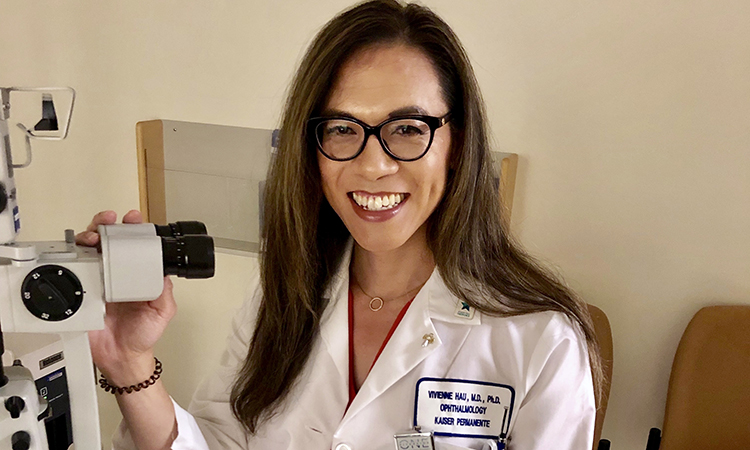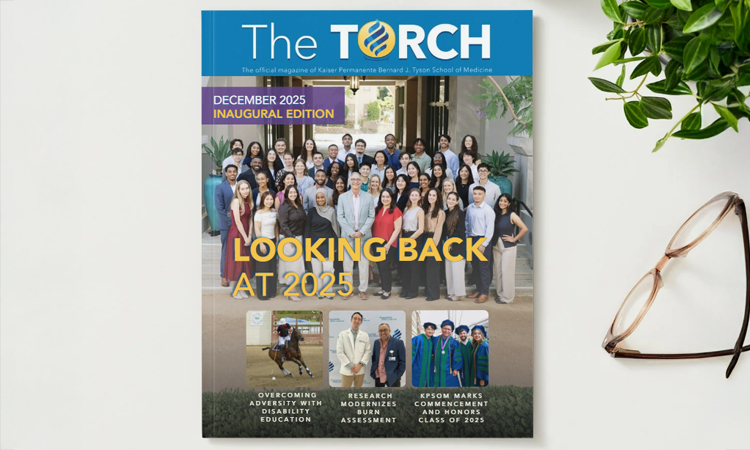In the March 2022 issue of Retina Today, KPSOM Assistant Professor of Clinical Science Vivienne S. Hau, MD, PhD, shares her personal transition story as well as several best practices clinical leaders and staff can use to facilitate a more inclusive environment.
Dr. Hau, a retinal surgeon at Kaiser Permanente Riverside Medical Center who identifies as transgender or gender non-binary (TGNB), explained the anxiety she initially felt when running into an acquaintance during a Women in Retina meeting after her transition. In the Retina Today piece, Dr. Hau notes that she was not sure if she had spoken with her acquaintance about her transition prior to the meeting and describes the comfort, acceptance, and feelings of inclusion she felt when her acquaintance asked about her daughter and engaged Dr. Hau in friendly conversation. Dr. Hau further explains that acceptance is critical to strong mental health and is the most important way a relative, friend, colleague, or medical professional can help someone who identifies as TGNB.
According to the piece, approximately 1.4+ million Americans identify as TGNB and nearly one-third of respondents to the 2015 US Transgender Survey said their healthcare provider was unaware they were TGNB. One-third of survey respondents further cited at least one negative experience with a healthcare provider in the past year, such as incidents of disrespect, harassment, or refusal of treatment. Two percent of survey respondents reported sexual or physical assault within a healthcare environment. Such mistreatment, along with a long-held medical belief that those who identify as TGNB have gender identity disorder—a term that was removed from the American Psychiatric Association’s mental health guidelines in 2012—accounts for some of the anxiety many TGNB individuals associate with a visit to a clinician’s office.
Dr. Hau shares the following seven strategies clinicians can incorporate into the workplace to help ensure a more welcoming and accepting environment for all, including TGNB colleagues and patients:
- Use inclusive language and individuals’ proper pronouns.
- Incorporate organization-wide diversity education.
- Make certain workplace policies are inclusive, clear, and easy to access.
- Adopt gender-neutral signage for restrooms.
- Use bias-conscious recruiting and hiring strategies.
- Provide inclusive benefits to your workforce.
- Educate your workforce on gender identity and the harm associated with transphobic or homophobic jokes or commentary.
Read the article here .



